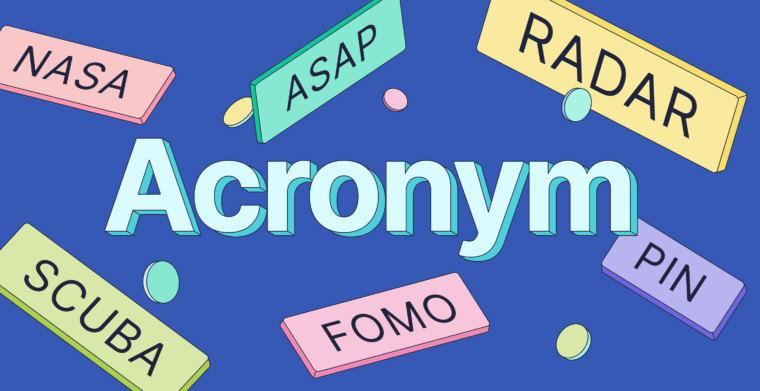
Key takeaways:
- Et al. is a Latin abbreviation that means “and others,” used in academic citations.
- It simplifies references by indicating multiple authors without naming each one.
- It typically follows the first author’s name, with exact usage rules varying by citation style (such as APA, MLA, or Chicago).
Ever been bogged down by endless author lists in a research paper? Et al. is a common shortcut in academic writing that can save you space and keep your readers focused. When used correctly, it streamlines your citations, sharpens your writing, and creates research that looks polished and credible.
Understanding when and how to use et al. is key to writing clear research papers, especially since styles like APA, MLA, and Chicago each have their own rules. Let’s break down how to use et al. correctly across different citation styles.
Table of contents
Comparing et al. to other abbreviations
Et al. meaning
Et al. is a Latin term meaning “and others.” When you cite a source with multiple authors, using et al. after the first author’s name simplifies the reference.
This shortcut is helpful in research writing to avoid lengthy lists of names, keeping the focus on the key points. In contemporary academic writing, et al. is commonly used as a gender-neutral shorthand for any group of people.
When to use et al.
Use et al. when citing a source with multiple authors, but follow the specific guidelines for your citation style. The rules for using et al., including how many authors should be named, vary across different citation styles. Here are the general rules for the most common style guides.
APA 7
In APA 7 style, use et al. in all in-text citations with three or more authors, listing only the first author’s last name followed by et al.
Examples:
- (Lopez et al., 2020)
- Lopez et al. (2020) found that …
In the reference list, APA 7 allows up to 20 authors before shortening with an ellipsis and the final author’s name.
Example:
Lopez, J., Martin, K., Nguyen, R., Thomas, L., Chang, D., Patel, A., … Simmons, R. (2020). Title of the article. Journal Name, 15(4), 123–145. https://doi.org/xxxx
MLA
MLA style uses et al. when a source has three or more authors. For in-text citations, list the first author’s last name followed by et al.
Examples:
- (Nguyen et al. 112)
- Nguyen et al. argue that …
In the Works Cited list, only the first author is named, followed by et al.
Chicago
Chicago style uses et al. for sources with four or more authors. In both footnotes and bibliographies, list the first author, then et al.
Examples (Notes):
- Emily Ross et al., Climate Change in Context (Chicago: Green Press, 2019), 22.
Bibliography:
- Ross, Emily, et al. Climate Change in Context. Chicago: Green Press, 2019.
For the author-date system, use et al. in in-text citations:
- (Ross et al. 2019)
Comparing et al. to other abbreviations
When it comes to writing, Latin abbreviations like et al., etc., i.e., and e.g. are easy to mix up. The table below breaks down what each one means, how it’s used, and how each compares to et al.
| Abbreviation | Definition | Example | How does it compare to et al. |
| etc. | Short for et cetera, meaning “and so on” or “and other similar things.” | Bring snacks like chips, cookies, soda, etc. | Etc. means additional things, while et al. means additional people (authors). |
| i.e. | Short for id est, meaning “that is” or “in other words.” | He’s a pescatarian, i.e., he eats fish but no other meat. | I.e. clarifies or restates. Et al. credits additional authors or people. |
| e.g. | Short for exempli gratia, meaning “for example.” | She enjoys outdoor activities, e.g., hiking and kayaking. | E.g. gives examples while et al. implies others in a group, specifically authors in citations. |
Use et al. for shorter citations
Using et al. correctly streamlines your academic writing and demonstrates attention to detail and respect for scholarly conventions. Always consult your specific style guide to ensure you’re applying it properly.
Prioritize clarity in research with Grammarly
Using et al. keeps citations concise, but accuracy is key. Grammarly ensures it’s properly formatted in APA, MLA, or Chicago styles and can even generate full citations with one click. It’s a fast, reliable way to keep your writing clear and credible.
Et al. FAQs
Below are frequently asked questions about using et al. in writing and citations.
What number of authors is required for et al. use in a citation?
Et al. is used in citations when there are multiple authors. The exact number of authors needed before using et al. can depend on the citation style. Generally:
- In APA style, you use et al. when citing a work with three or more authors.
- In MLA style, you can use et al. for a work with more than three authors.
- In Chicago style, it varies; however, et al. is typically used when there are four or more authors.
Always check the specific style guide you are following for the precise and most up-to-date rules.
What’s the difference between et al. and et alibi?
Both et al. and et alibi come from Latin, but they have different meanings, and you will use them differently.
- Et al. means “and others” and is commonly used in citations to refer to additional authors or contributors.
- Et alibi means “and elsewhere” or “in other places” and is rarely used in writing or citations.
Can you use et al. in everyday situations or just research?
Et al. is mainly used in academic or professional contexts, such as research papers and articles, to cite multiple authors. While it can be used informally, it’s best to avoid it outside formal writing, as it may seem overly technical or unclear to a general audience.






